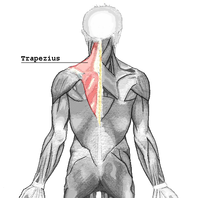
Photo from wikipedia
Abstract Background Computed tomography currently has a prominent role in diagnosis and evaluation of vertebral column. On the other hand, a thorough knowledge about vertebral column property in normal state… Click to show full abstract
Abstract Background Computed tomography currently has a prominent role in diagnosis and evaluation of vertebral column. On the other hand, a thorough knowledge about vertebral column property in normal state is prerequisite an accurate diagnosis of different abnormalities in this region. Objective The purpose of this study was to present a complete and exact descriptive and morphometric evaluation of thoracic vertebrae in rabbits with computed tomography. In images which were constructed by CT, several structures and different parts of the thoracic vertebrae have been named. Methods Ten healthy, mature, White New Zealand rabbits were evaluated. The morphologic and morphometric parameters of the thoracic vertebrae were studied. In this study, several parameters of thoracic vertebrae, such as vertebral body height, spinous process height, transverse process length, transverse process width, etc., were measured by computed tomography. Results Some parameters, such as spinal canal height, spinal canal width, pedicle length, pedicle width, end plate width, and endplate height, had no significant difference through thoracic vertebrae but other parameters, such as vertebral body height, transverse process length, transverse process width, spinous process angle, transverse process angle, and vertebral body length, had a significant difference. Conclusions In this study, a comprehensive anatomic atlas of CT anatomy of the thoracic vertebrae was produced for use by veterinary radiologists, clinicians, and surgeons. Finally, we must mention these two important points: (1) Many of the differences observed between rabbits and humans are based on the way the trunks of these two creatures are located on the ground and the differences in the way their bodies move. (2) In studies that are done by modelling humans on animals, it should be noted that the terms used in animal anatomy are different and the names are used using the principles of veterinary anatomy.
Journal Title: Veterinary Medicine and Science
Year Published: 2022
Link to full text (if available)
Share on Social Media: Sign Up to like & get
recommendations!